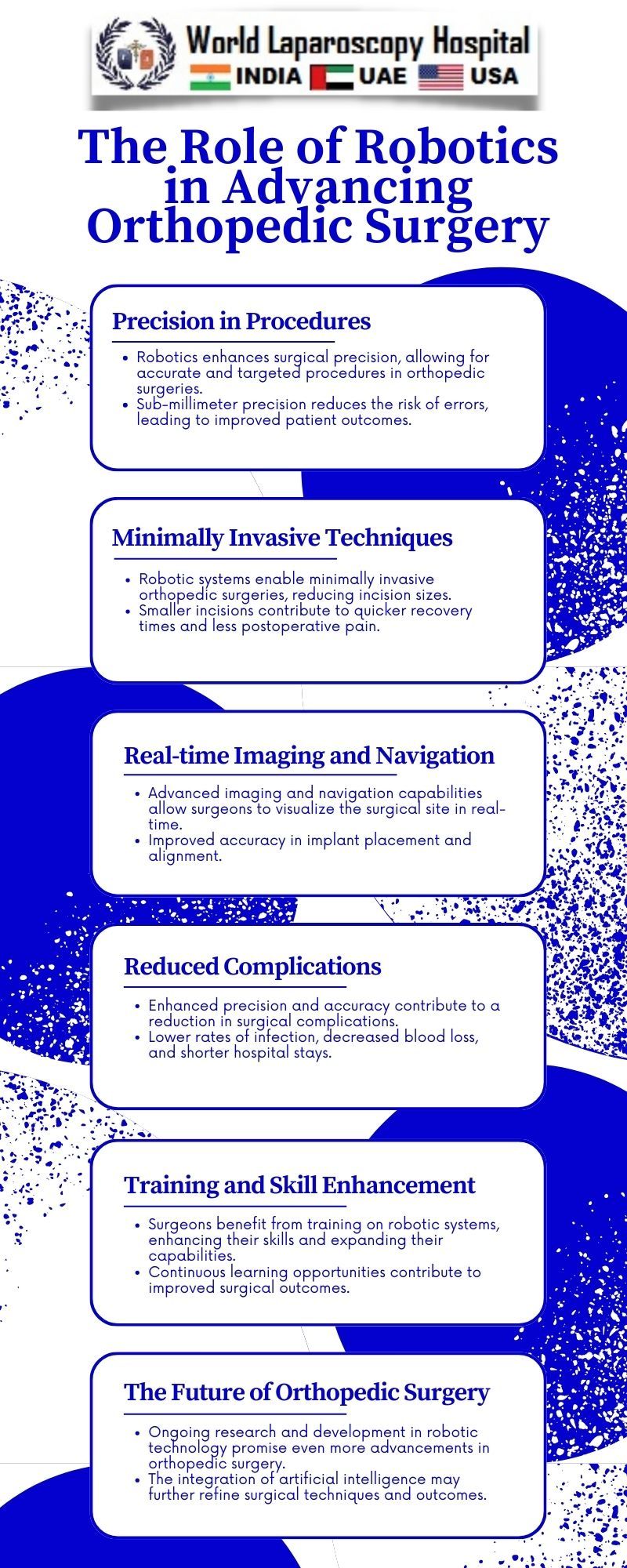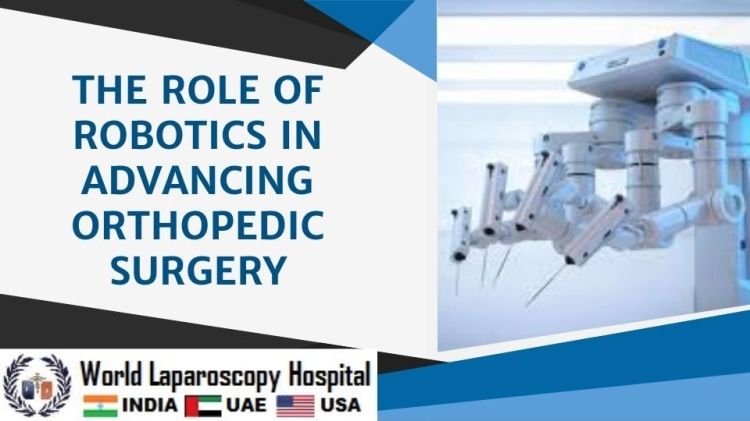The Role of Robotics in Advancing Orthopedic Surgery
Introduction:
Orthopedic surgery has undergone a transformative journey over the years, with advancements in technology playing a pivotal role in enhancing precision, efficiency, and patient outcomes. Among these technological marvels, robotics has emerged as a groundbreaking force, reshaping the landscape of orthopedic surgery. This article delves into the multifaceted role that robotics plays in advancing orthopedic surgery, exploring its impact on preoperative planning, intraoperative precision, and postoperative recovery.

The foundation of any successful orthopedic surgery lies in meticulous preoperative planning. Robotics contributes significantly to this phase by providing surgeons with advanced tools and technologies that enable comprehensive and patient-specific planning.
Imaging and 3D Modeling:
Robotics in orthopedic surgery begins with cutting-edge imaging techniques. High-resolution CT scans and MRIs offer detailed insights into the patient's anatomy, allowing for the creation of precise 3D models. These models serve as invaluable tools for surgeons, offering a three-dimensional understanding of the patient's unique anatomy and aiding in the formulation of personalized surgical plans.
Virtual Surgical Simulation:
Robotic systems often integrate virtual surgical simulation platforms. Surgeons can practice and refine their techniques in a virtual environment, simulating the actual procedure with the patient's specific anatomy. This not only enhances the surgeon's skills but also allows for the identification of potential challenges and complications before stepping into the operating room.
Once the preoperative planning is complete, the focus shifts to the operating room where robotics takes center stage in ensuring unparalleled precision during the surgical procedure.
Robotic-Assisted Surgery:
One of the most significant contributions of robotics to orthopedic surgery is through robotic-assisted procedures. Robotic systems, guided by the surgeon's inputs, provide real-time assistance during surgery. These systems are equipped with highly sensitive sensors and sophisticated algorithms that enhance the precision of movements, allowing for minimally invasive techniques with minimal damage to surrounding tissues.
Navigation and Tracking:
Robotics incorporates advanced navigation and tracking systems that offer continuous feedback to the surgeon. This real-time information ensures accurate placement of implants and instruments, reducing the margin of error and enhancing the overall success of the surgery. Navigation systems also aid in adapting to changes in the patient's anatomy, ensuring adaptability during complex procedures.
Haptic Feedback:
The integration of haptic feedback technology allows surgeons to sense resistance and forces during the procedure. This tactile feedback provides a sense of touch in the virtual environment, enabling surgeons to make precise adjustments based on the feel of the tissues. This haptic capability adds a crucial layer of sensitivity to robotic-assisted surgeries.
The benefits of robotics in orthopedic surgery extend beyond the operating room, playing a significant role in the postoperative phase and influencing the patient's recovery journey.
Minimized Trauma and Faster Recovery:
Robotic-assisted surgeries often involve smaller incisions and less trauma to surrounding tissues. This minimally invasive approach translates into reduced pain and faster recovery times for patients. The precision offered by robotics also contributes to the longevity and functionality of implants, minimizing the likelihood of complications and revision surgeries.
Rehabilitation Assistance:
Some robotic systems extend their influence into the rehabilitation phase. Robotic exoskeletons and assistive devices aid patients in regaining mobility and strength during the recovery process. These devices, designed in collaboration with orthopedic surgeons and physical therapists, provide targeted support to specific muscle groups, expediting the rehabilitation journey.
Challenges and Future Directions:
While the role of robotics in advancing orthopedic surgery is undeniably significant, challenges and areas for improvement persist.
Cost Implications:
The initial investment and maintenance costs associated with robotic systems can be a barrier for some healthcare institutions. As technology evolves, efforts are being made to make these systems more cost-effective, ensuring broader accessibility.
Surgeon Training:
The integration of robotics necessitates specialized training for surgeons. The learning curve associated with adopting robotic-assisted procedures may pose challenges. Continuous training programs and educational initiatives are crucial to ensure surgeons can harness the full potential of these technologies.
Interoperability:
Achieving seamless interoperability between different robotic systems and surgical tools remains an ongoing challenge. Standardization efforts are underway to enhance compatibility and facilitate a more integrated approach to robotic-assisted surgeries.
Looking ahead, the future of robotics in orthopedic surgery holds immense promise. Technological advancements, coupled with ongoing research, will likely address current challenges and further refine the role of robotics in shaping the future of orthopedic surgical practices.
Conclusion:
The integration of robotics into orthopedic surgery represents a paradigm shift, marking the convergence of technological innovation and medical expertise. From preoperative planning to intraoperative precision and postoperative recovery, robotics has become an indispensable tool for orthopedic surgeons. As technology continues to evolve and surgical techniques advance, the collaboration between human skill and robotic precision promises a future where orthopedic surgeries are not only more effective but also more accessible to a broader population.
